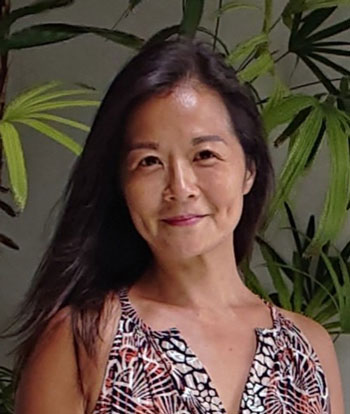INTERVIEW: BRIDGET TRACY TAN
Bridget Tracy Tan is Director for the Art Galleries and the Institute of Southeast Asian Arts at the Nanyang Academy of Fine Arts. Formerly a curator at the Singapore Art Museum (now National Gallery Singapore), she oversees the internal and external programming for 3 galleries located on campus. Her work at NAFA includes initiating practice led research into Southeast Asian modern and contemporary art across the disciplines in seminars and workshops for students and lecturers alike. She has written and edited publications on art as well as catalogues and monographs for artists alongside exhibition projects. She is currently also Academic Advisor for Southeast Asian Arts at NAFA.
She graduated with a Master of Arts, obtaining First Class Honours in Art History from the University of Glasgow in Scotland. Her PhD was obtained from Chelsea College of Art, University of the Arts London, in practice-led research as a curator and critical art historian. The thesis critically explored Southeast Asian museology and Southeast Asian curating in contemporary paradigms that extend into global platforms, specifically, biennales.
How did you start curating, and how do you define your curatorial work?
In my third year at Glasgow, we were advised to seek internships for the summer month before final year Honours. I returned to Singapore and they were building what was then known as the Singapore Art Museum (that is today, National Gallery Singapore). I sought out an internship and was attached to the curator there. She spoke 4 to 5 different languages, was a firebrand and very energetic. She gave me and another intern, Katherine, what I consider real research work. I learned a lot from her. The following year, when I graduated, my natural impulse was to go back to the place and seek a job. They had advertised a job for Assistant Curator, and I applied.
I worked in the museum as a curator for over 7 years. It was my first job and largely defined my ideas and job scope about curating.
My curatorial work is grounded in knowledge and the historical. Nothing exists in a vacuum. And though we do not necessarily need to create a context for all art objects to be read, generally, there are ways and means of directing how people see, make connections and make meaning from how objects are arranged in order to reap an enriched experience from exhibitions. I am also a firm believer in the artmaker and the object. I’d like to think that my curating articulates a clear voice for the artist and what he/she creates.
What do you look for in a curatorial proposal?
It is best if a curatorial proposal knits a narrative around objects and artists without imposing too much of their own ‘ideas’. For me, I want to see that the curator knows the artists and wants to shape a new way in which the artmaker and the objects can be received and seen. The world is so cluttered now with many types of ‘curating’ and exhibitions. That is not to say it is bad or good. It is really a matter of why one person should care to see the artworks through your curated exhibition and not elsewhere.
In your opinion, what characterises a successful exhibition?
A successful exhibition is one where visitors are given time to focus on a handful of significant objects that contribute to the totality of their experience. That visitors come away with some new insight, some feeling of wonder and curiosity. In the 16th century, the concept of the Wunderkammer was born. The Wunderkammer literally meant ‘cabinet of curiosities/wonder’. The Royal Collection Trust writes, “Samuel Quiccheberg detailed the ideal formula for the Wunderkammer as including naturalia (items created by the earth and items drawn from nature), mirabilia (unusual natural phenomena), artificialia (items wrought by man), ethnographica (items from the wider world), scientifica (items that brought a great understanding of the universe) and artefacta (items relating to history).” I have often felt that curating exhibitions is like constructing Wunderkammers. It is a feeling that stays with me even today.
Apply for Curator Open Call here.
Deadline: 21 May 2021

